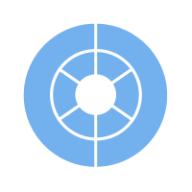

| Product | Market Share (%) |
|---|---|
| Obsidian CDR Platform | 12.6% |
| Adaptive Shield | 9.7% |
| Other | 77.7% |

Adaptive Shield is a leading SaaS security posture management (SSPM) solution that provides visibility and remediation of potential risks in the SaaS estate caused by misconfigurations and misappropriated privileges. It enables security teams to locate and fix configuration weaknesses quickly, ensuring compliance with company and industry standards. The solution integrates with all types of SaaS applications, including video conferencing platforms, customer support tools, HR management systems, dashboards, workspaces, content and file-sharing applications, messaging applications, marketing platforms, and more. In addition, Adaptive Shield's framework is easy to use, intuitive, and doesn’t take long to deploy.
Adaptive Shield Features And Benefits
Adaptive Shield has many valuable key features and benefits. Some of the most useful ones include:
Obsidian CDR enables security teams to focus on mitigating risks and threats and improving the security of their SaaS applications. The solution provides continuous visibility and powerful analytics to uncover, investigate, and respond to breaches and insider threats in SaaS applications quickly without causing business interruptions or slowing down business. The Obsidian CDR Platform data infrastructure is built with a deep understanding of how the APIs are structured, what data can be retrieved, and with what frequency. The Obsidian CDR Platform is capable of stopping even the most advanced attacks across SaaS and cloud services by using a unique identity-centric approach.
Obsidian CDR Features
Obsidian CDR has many valuable key features. Some of the most useful ones include:
Obsidian CDR Benefits
There are many benefits to implementing Obsidian CDR. Some of the biggest advantages the solution offers include:
We monitor all SaaS Security Posture Management (SSPM) reviews to prevent fraudulent reviews and keep review quality high. We do not post reviews by company employees or direct competitors. We validate each review for authenticity via cross-reference with LinkedIn, and personal follow-up with the reviewer when necessary.